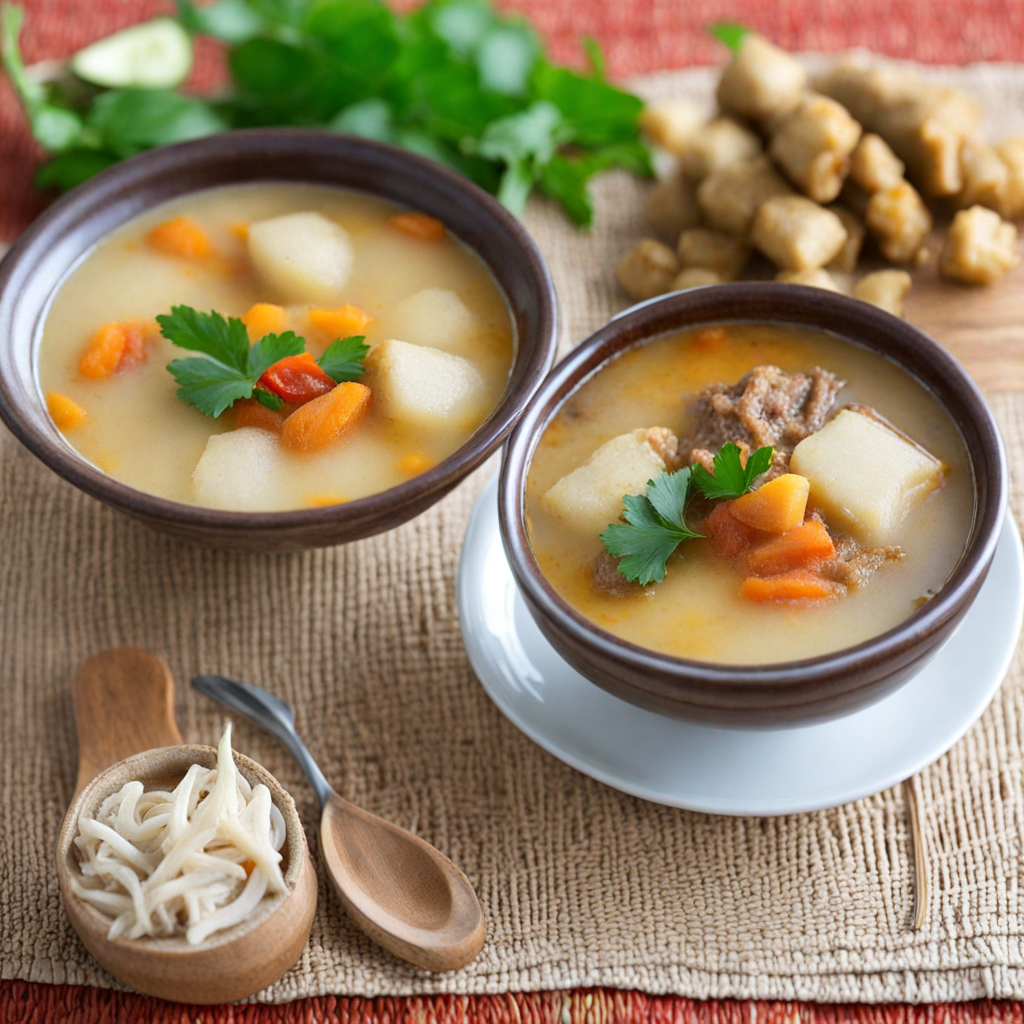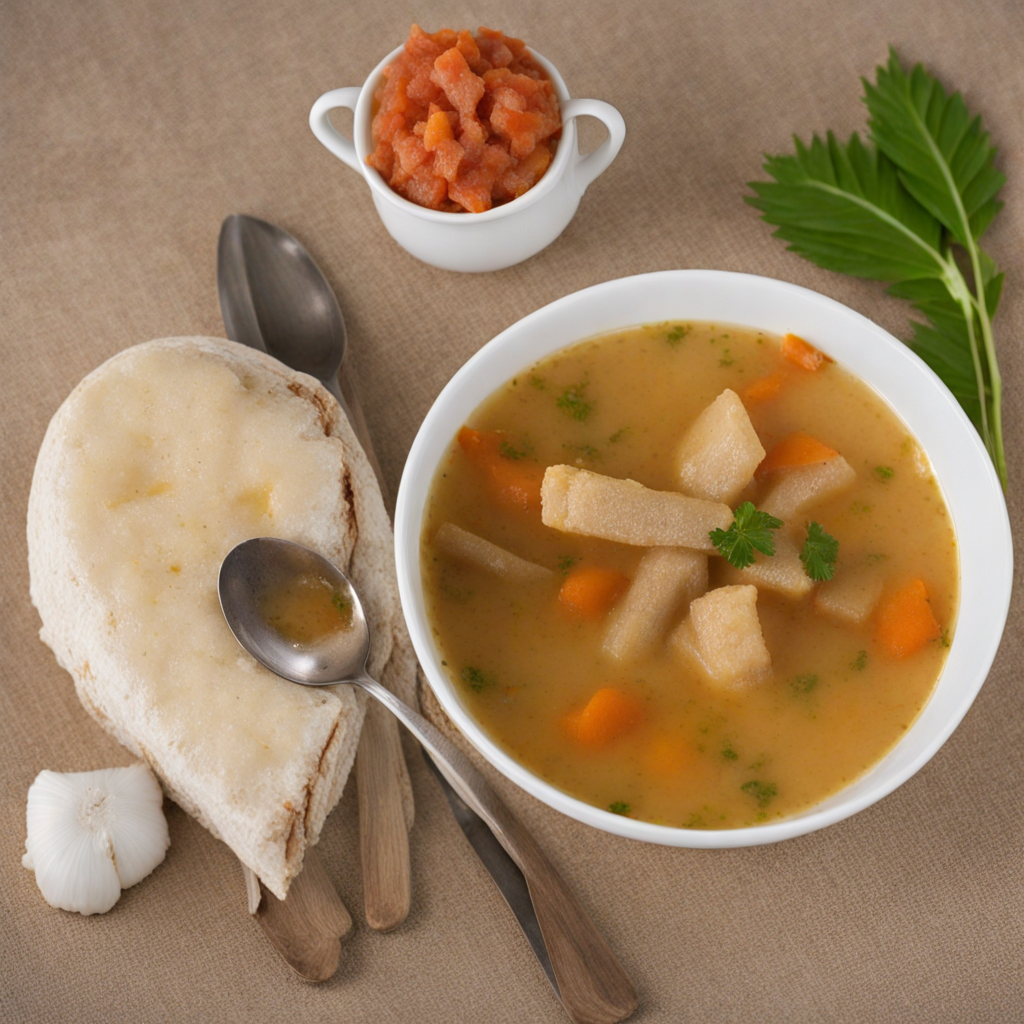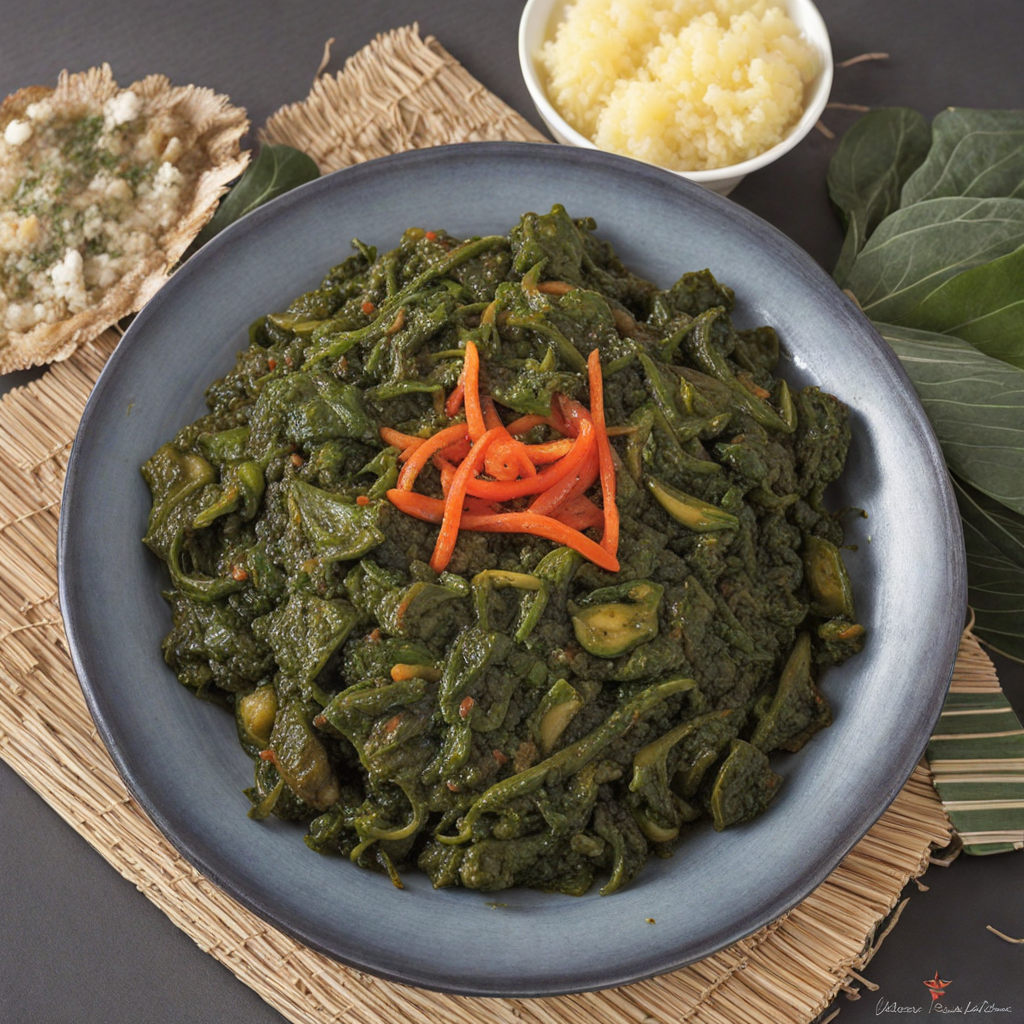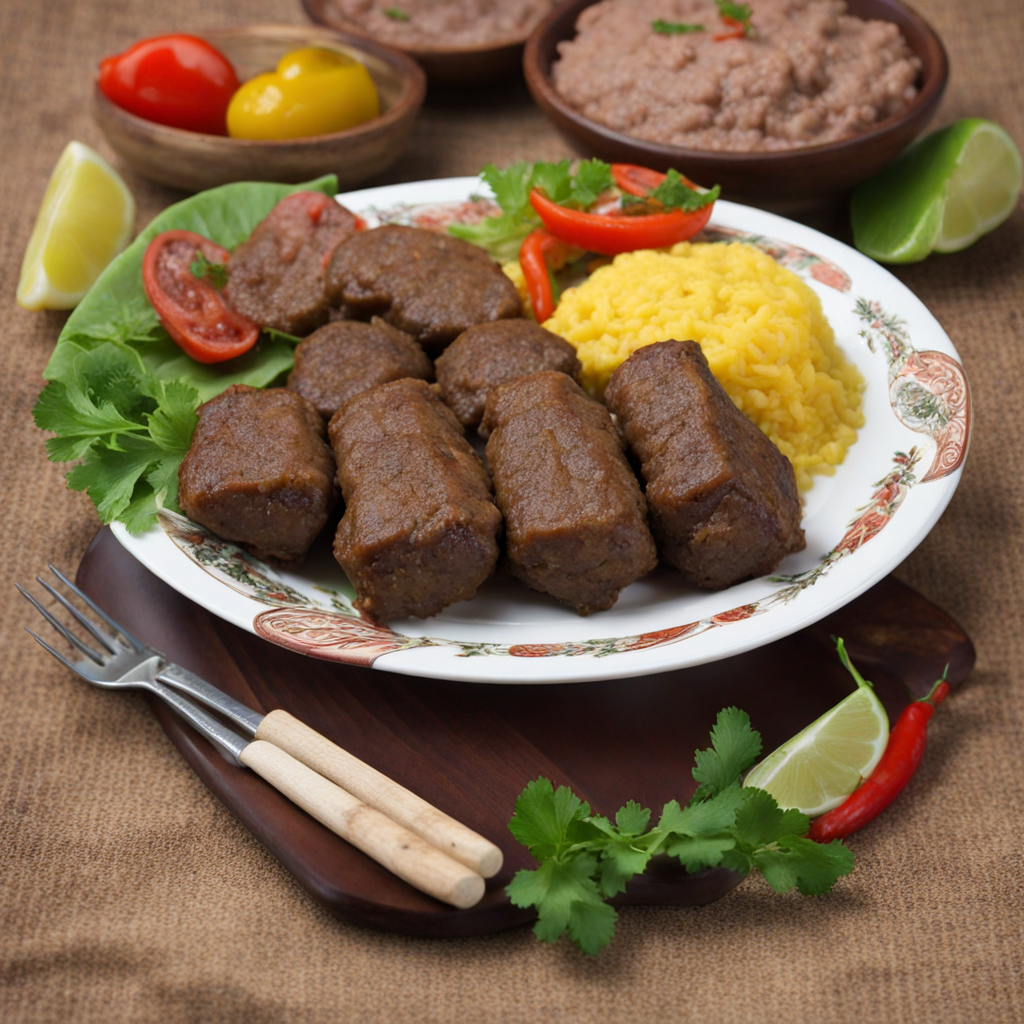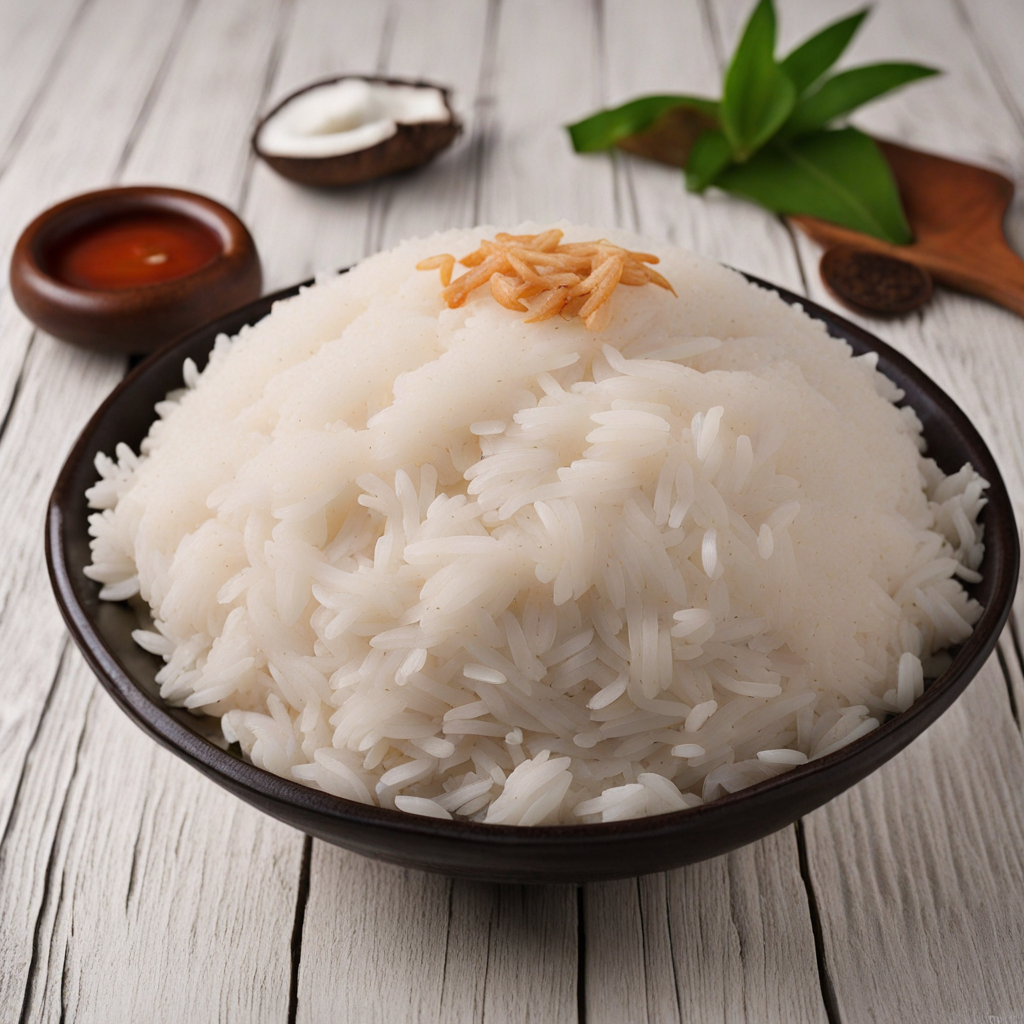Cassava Soup
Cassava Soup, a delightful dish from Suriname, showcases the unique flavors and textures of the region through its primary ingredient—cassava. This starchy root vegetable, also known as manioc or yuca, is a staple in many South American cuisines. The soup is typically prepared by boiling grated cassava until it softens, then blending it into a creamy consistency. The result is a rich, hearty base that serves as a canvas for various seasonings and ingredients, creating a comforting and satisfying meal that embodies the warmth of Surinamese hospitality. To elevate the flavor profile, Cassava Soup often incorporates an array of aromatic spices and herbs, such as garlic, onions, and fresh cilantro. Some variations may include additional vegetables like tomatoes and bell peppers, adding layers of flavor and nutrition. For protein, it can be enriched with meats like chicken or fish, making it a versatile dish that can cater to different dietary preferences. The combination of the creamy cassava and the vibrant spices creates a harmonious balance that excites the palate and invites you to savor each spoonful. Served hot, Cassava Soup is perfect for any occasion, whether it be a family gathering or a casual meal. Its comforting nature makes it a popular choice during cooler weather, while its nourishing qualities make it a beloved staple year-round. Often enjoyed with a side of rice or crusty bread, this soup not only introduces you to the flavors of Suriname but also offers a glimpse into the rich culinary traditions of the region, making it a must-try for adventurous food lovers.
How It Became This Dish
The Rich Tapestry of Cassava Soup in Suriname: A Culinary Journey #### Origins of Cassava Soup Cassava soup, known locally as "kassavsoep," is a cherished dish in Suriname, a small but culturally rich nation located on the northeastern coast of South America. This hearty soup is primarily made from cassava, a starchy root vegetable that has been a staple in the diets of indigenous peoples for centuries. The origins of cassava trace back to the Amazon Basin, where it was cultivated by the indigenous tribes long before European colonization. Suriname's diverse cultural landscape, influenced by its indigenous peoples, African slaves, Dutch colonizers, and Indian and Javanese immigrants, has transformed cassava into a central ingredient in many traditional dishes, particularly in the context of cassava soup. The dish reflects the melding of various culinary traditions, showcasing how cassava, a humble root, transcended its geographical origins to become an integral part of Surinamese identity. #### Cultural Significance In Suriname, food is much more than sustenance; it is a means of connection to heritage and community. Cassava soup is often prepared for special occasions and communal gatherings, embodying the spirit of togetherness. It serves as a comforting dish during cold weather, celebrations, and family gatherings, reinforcing its role in social bonding. The soup itself is a reflection of Suriname's multiculturalism. Each ethnic group adds its unique touch, flavorings, and techniques, transforming a simple cassava base into a rich tapestry of flavors. For instance, Afro-Surinamese cooks may add spices like chili and garlic, while Javanese influences might introduce soy sauce and coconut milk. The result is a soup that tells the story of the people who inhabit this diverse land. #### Ingredients and Preparation The basic ingredients of cassava soup include cassava, water, and often some form of protein, such as fish, chicken, or meat. Vegetables like carrots, onions, and bell peppers are commonly added for flavor and nutrition. The preparation begins with peeling and grating the cassava, which is then boiled until tender. The grated cassava is often strained to create a smooth, thick base, while the broth is flavored with spices and proteins. One of the unique aspects of cassava soup is its adaptability. Each household may have its own recipe, passed down through generations, creating a sense of culinary heritage. The soup can be made thick or thin, depending on personal preference, and it can be customized with a variety of additional ingredients, such as herbs or different types of meat, showcasing the versatility of cassava as a primary ingredient. #### Historical Development As Suriname evolved through colonial times, so did its culinary practices. The Dutch colonizers introduced new agricultural techniques and crops, influencing local food production. However, the indigenous and enslaved African populations primarily shaped the culinary landscape, using ingredients like cassava to create dishes that resonated with their cultural identities. The arrival of indentured laborers from India and Java in the 19th and early 20th centuries further enriched Suriname's cuisine. These groups brought their culinary traditions, contributing to the flavor profiles of cassava soup. The infusion of spices and cooking techniques from various cultures is reflected in modern cassava soup recipes, which often blend elements from Afro-Surinamese, Indian, and Javanese cuisines. In the latter half of the 20th century, as Suriname gained independence in 1975, the nation began to embrace and celebrate its diverse cultural heritage. This resurgence in cultural pride led to a revitalization of traditional dishes, including cassava soup. It became a symbol of national identity, representing the unity of Suriname's various ethnic groups. #### Contemporary Significance Today, cassava soup remains a staple in Surinamese households and is commonly served at family gatherings, community events, and celebrations. It is often featured in restaurants, showcasing the dish to tourists and helping to promote Surinamese cuisine on an international stage. The soup is more than just a meal; it is a cultural artifact that tells the story of Suriname's past, present, and future. In recent years, there has been a growing interest in sustainable and local food practices, leading to a renewed appreciation for ingredients like cassava. As people seek to reconnect with their roots and support local agriculture, cassava soup has found its way into the hearts and kitchens of both young and old. Moreover, the rise of social media and food blogging has allowed Surinamese cuisine, including cassava soup, to reach a global audience. Recipes are shared, adapted, and celebrated, introducing the dish to new palates while preserving its traditional roots. This fusion of old and new continues to define cassava soup's evolution, ensuring that it remains a vital part of Suriname's culinary heritage. #### Conclusion Cassava soup is more than just a dish; it is a narrative woven into the fabric of Surinamese culture. From its origins in the Amazon to its present-day status as a beloved comfort food, the soup encapsulates the resilience and creativity of a diverse nation. As Suriname continues to navigate the complexities of modernity while honoring its rich history, cassava soup will undoubtedly remain a cornerstone of its culinary identity, celebrating the flavors and stories of its people. In every bowl of cassava soup, one can taste the legacies of indigenous peoples, the resilience of enslaved Africans, and the contributions of immigrant communities, all simmering together in a delicious homage to Suriname's vibrant history.
You may like
Discover local flavors from Suriname


